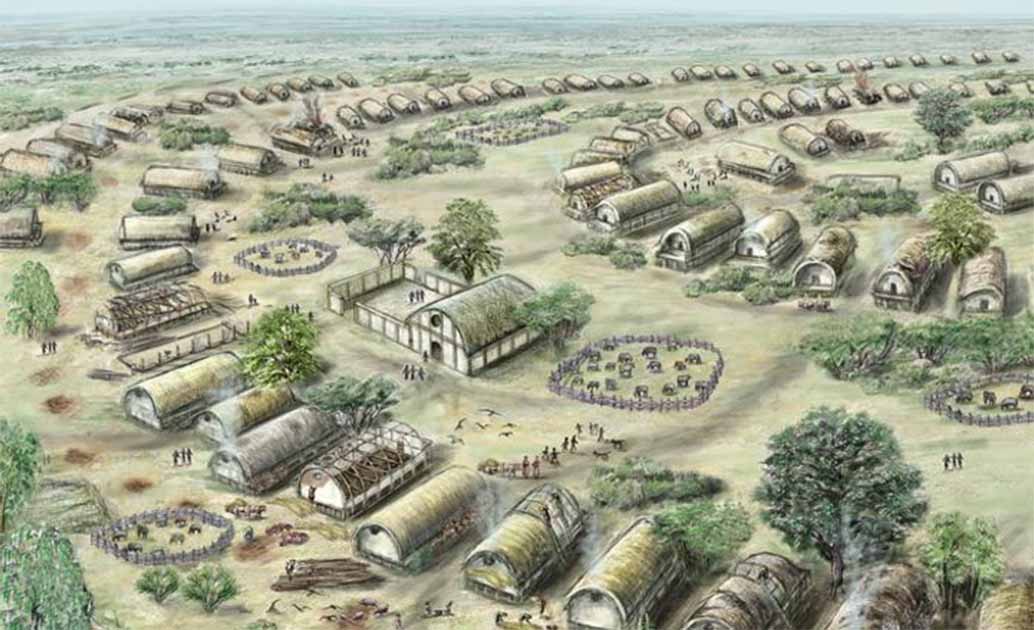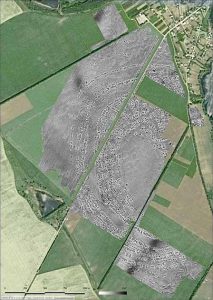Discovered by Researchers, the Oldest Cities’ Diet: From Peas to Prosperity

You are what you eat! A team of researchers from Kiel University has delved into the nutritional aspects of Trypillia mega-sites in the forest steppe northwest of the Black Sea—today the territory of the Republic of Moldova and Ukraine. These mega-sites emerged approximately 6,000-years ago and were the largest settlements globally during this period, covering areas of up to 320 hectares. The Neolithic settlements during this period had farmers cultivating a diet of primarily beans, grains and peas, the research shows.
The study is part of the latest investigations into Trypillia societies, which boasted populations of around 15,000 people. They’re regarded as the oldest ‘cities’ in Europe, predating even the urbanization of Mesopotamia.
The research and study is led by the Collaborative Research Center (CRC) 1266 at Kiel University (CAU), was published in Proceedings of Natural Academy of Sciences. It was spearheaded by archaeologist Professor Johannes Müller, in collaboration with researchers from Ukraine and Moldova.

Researchers Say Human Cooperation Sparked Neolithic Revolution
Neolithic Revolution Spurred Mental and Physical Growth of Europeans
The Trypillia mega-settlement Maidanetske in Central Ukraine encompassed ca. 200 ha. Even without ground intervention, the archaeomagnetic results of a geophysical survey show the archaeologists the numerous streets, public buildings, squares and thousands of burnt houses. (© Institute for Prehistoric and Protohistoric Archaeology/ Kiel University)
Mystery of the Food Supply Systems Solved
The food supply system supporting these settlements has been a source of numerous inquiries among researchers. Previously, it was understood that many small Neolithic settlements relied on subsistence farming for sustenance.
“The provisioning of the residents of the mega-sites was based on extremely sophisticated food and pasture management,” says Kiel paleoecologist Dr. Frank Schlütz, one of the authors of the study.
The modern tales of Popeye, the sailor, and his legendary strength derived from spinach are well-known to almost everyone. However, modern science has revealed that the nutritional value of spinach was overestimated. In stark contrast, peas emerge as a highly beneficial component of human nutrition due to their rich protein content. Surprisingly, the significance of peas has been greatly undervalued by scientific understanding, according to a press release by Kiel University.
Isotopic analysis provides a valuable tool for understanding the practices of maintaining domestic animals, the fertilization methods employed in cultivating crops, and the role played by plants and animals in the dietary habits of ancient societies thousands of years ago.
Peas and grains served as the fundamental components of a human diet that not only provided nutrition but, owing to the peas, also maintained a balance of essential amino acids. The byproduct, pea straw, likely played a role in feeding livestock on the pastures. The symbiotic relationship between crop production and stockbreeding allowed the inhabitants of the mega-sites to attain a diet that was both ample and healthy.
“We concluded that a large proportion of the cattle and sheep were kept on fenced pastures. Moreover, the manure of the animals produced there was used by people to intensively fertilize the peas in particular,” explained Dr. Schlütz.
The labor-intensive and resource-demanding process of meat production was significantly minimized. The decline of the settlements, in this context, was primarily attributed to social factors, marking a departure from the efficient and interconnected agricultural and stockbreeding practices that had sustained the communities.

Archaeomagnetic plan of the Maidanetske Trypillia mega site, Ukraine (c. 3950- 3650 BC), showing concentric arrangement of houses, circumferential ring corridor, open central area, and assembly houses for neighborhoods and quarters. (Institute of Pre- and Protohistoric Archaeology/ Kiel University)
Tripillia Culture: Agriculture and Stockbreeding
Formed around 4800 BC in the forest steppe north of the Black Sea, societies centered on agriculture and stockbreeding marked the emergence of the Trypillia culture. Commencing approximately in 4150 BC, the inhabitants of the Trypillia society embarked on the construction of vast planned settlements. These settlements were equivalent to several hundred football fields and meticulously organized.
Given the scale of the settlements, daily life within them resembled that of other agricultural towns, and the majority of the inhabitants were primarily engaged in farming, securing their food supply with whatever Neolithic technology they had, a question which is still open.
A well-defined layout featuring organized neighborhoods, complete with meeting houses facilitating communal gatherings and active participation in social decision-making processes characterized these settlements. The zenith of the Trypillia society, distinguished by its colossal settlements, endured for around 500 years. It ultimately succumbed to collapse when the population faced isolation from communication structures, and decision-making processes became centralized.
Archaeologist Dr. Robert Hofmann concluded in the press release that, “As we know from previous studies, social tensions arose as a result of increasing social inequality. People turned their backs on large settlements and decided to live in smaller settlements again.”